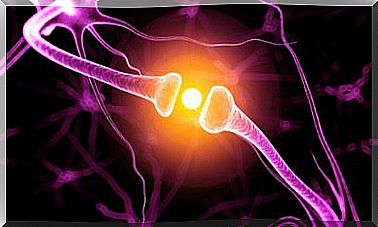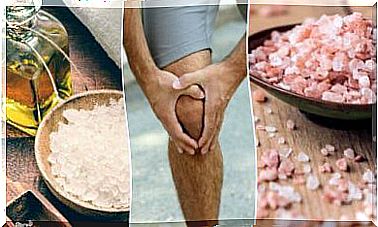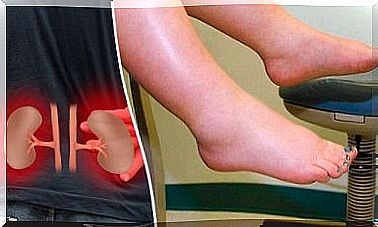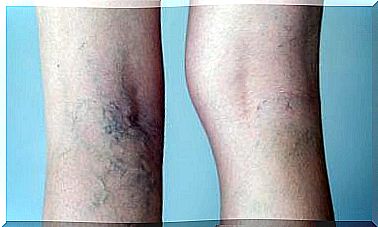Fracture Or Sprain: What’s The Difference?
It can sometimes be difficult to establish, at first, if we are facing a fracture or a sprain. These are traumas that share some symptoms but are not the same. Here we will explain how to tell them apart.

In trauma, there are two very common injuries: fracture and sprain. We all know someone who has had one of the two before, or we may have had one ourselves.
Since these are usual lesions, it makes sense that they are confusing. When faced with a trauma that results in pain in a limb, inflammation and impotence, it is normal to wonder if we are facing a fracture or a sprain.
You should know that it is not the same thing and that their consequences are not the same. The fracture is more serious, although some sprains can also be and endanger the joints or complicate the professional development, sports and quality of life of people who suffer from it.
We must first establish that a sprain is a typical ligament injury. In this case, the ligaments involved stretch more than they should and cannot return to their natural position. The extreme point of this situation is the rupture of the ligaments.
Fracture is defined as a problem of bone continuity. Bone tissue is interrupted, cut, is damaged in depth. To put it more simply, a fracture is the breaking of a bone.
From sprain to fracture
Even if one can legitimately wonder if one has suffered a fracture or a sprain, many believe that the first is the consequence of bad treatment of the second. However, it is not the case. They are separate entities that are not part of the same injury process.
On the other hand, we can say that there are degrees of severity in these lesions. In this sense, we can set a staggering from the lightest sprain to the fracture. Again, not because one leads to the other, but because their severity is different.
We would therefore have:
- First degree of sprain: it is the lightest. The ligaments have strained a little and are causing pain. There may be slight inflammation in the affected joint and a buildup of fluid – edema. Rest and anti-inflammatory drugs are sufficient.
- Second degree of sprain: here, the ligament distension is a little more important than in the previous degree. We also see some small breaks in the fibers. Kinesiology sessions are required for recovery.
- Third degree of sprain: this is the most severe form of sprain. Ligaments break, they don’t just strain. This sprain requires more intensive treatment with strict rest, movements with support and occasional physiotherapy exercises.
- Simple fracture: it is the rupture of the bone that remains in the body. It may or may not be accompanied by a nearby sprain from the same trauma that caused the fracture.
- Exposed fracture: bone tissue ruptures. Some of it ends up outside the body through a wound in the skin. The bone is then in contact with the external environment.
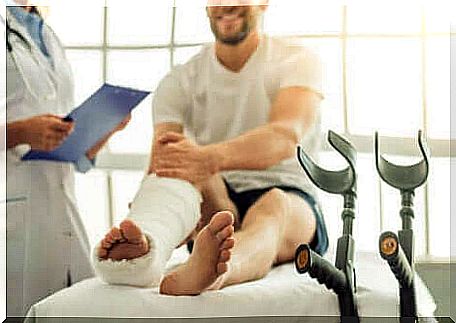
Differences between the two lesions
To tell the difference between a fracture and a sprain, you need to consider the symptoms, how the trauma happened, and the condition of the affected area after the trauma. The movements that can be made after the injury is established usually indicate the degree of severity.
However, once the lesion is established, it is easy to confuse them because fracture and sprain share symptoms. Both of these cases start with severe pain and inflammation. The area is inflamed because of the process that the injured body starts and because of the accumulation of fluid from the structures that stretch and rupture inside.
With hematomas, the situation is more complex. Usually fractures have a hematoma and most sprains do not. However, there are many bruises in severe sprains. We can also find the case of a fracture without hematoma on the surface of the skin.
A key sign of fracture is marked deformation of the area of the lesion. The broken bone causes lifting of the skin which ends in functional impotence. It is very difficult to perform movement with a fractured bone.
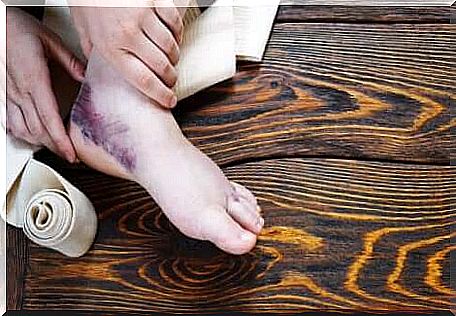
First aid for fracture and sprain
Once it is determined that it was a sprain, the steps to follow in order to provide first aid on site would be:
- Immobilization: the joint with a sprain must remain at rest.
- Local cold : cold on the joint decreases inflammation and this reduces pain.
- Bandage: for a sprain, a tight or compressive bandage is very useful. In addition to promoting immobilization, the bandage controls inflammation.
- Elevated Limb: Since we don’t want more fluid to build up in the injured joint, we need to elevate it to drain this excess edema.
On the other hand, if we have identified a fracture, the first aid would be:
- Touch as little as possible: it’s not the same as a sprain and you can’t handle a broken bone like that. The area of the lesion must be isolated, avoiding contact.
- Promote circulation: if the fracture has occurred in the foot or hand and there is an object that can interrupt the flow of blood, try to remove it. Suppose you broke your wrist and you have a watch: we need to try to remove it by touching the affected area as little as possible.
- Control bleeding: if at the same time as the fracture there is bleeding, we are forced to compress the point through which the blood flows. Large fractures and exposed fractures are capable of causing sudden blood loss, which jeopardizes the recovery of a limb.
As we see, there are a lot of differences between fractures and sprains, although they can have similar initial symptoms. It is important to make an accurate diagnosis because treatment will depend on it.
